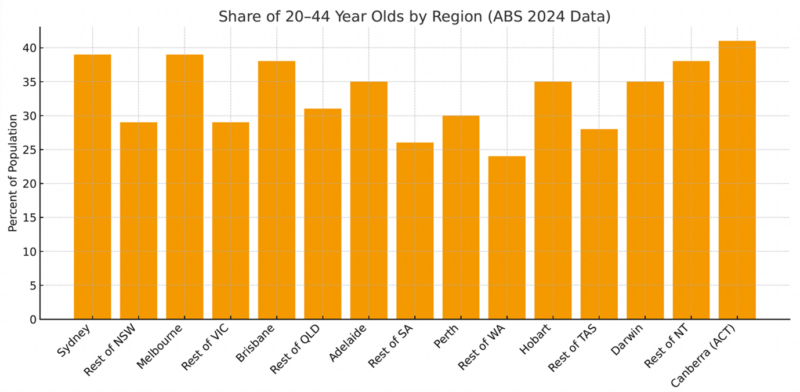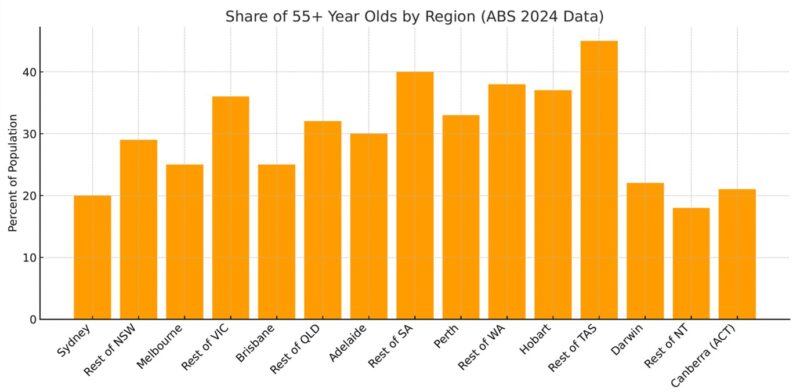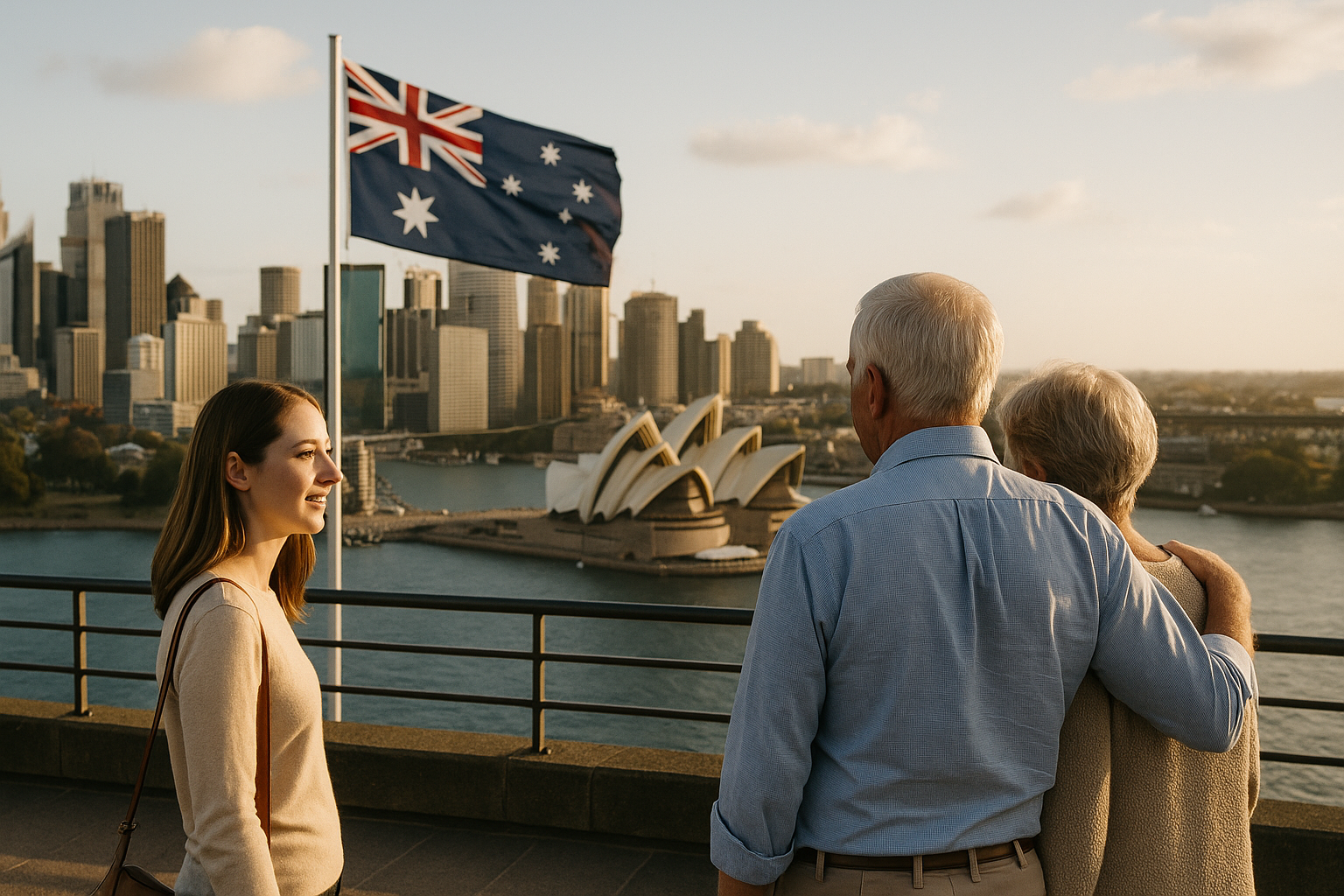
Key takeaways
Hobart has overtaken Adelaide as the oldest capital city, with a median age of 39.3 years.
Darwin remains the youngest, with a median age of 34.8 years.
Canberra and Perth skew younger due to migration and a high share of 20–39 year-olds.
Sydney and Melbourne attract Millennials and Gen Zs through jobs, universities, and migration.
Rental demand strongest in capitals: Millennials and Gen Zs value lifestyle, proximity, and flexibility, keeping pressure on apartments, townhouses, and family homes.
Regions will see downsizing demand: Older populations will increasingly seek single-level homes, boutique apartments, and proximity to healthcare.
Hobart & Adelaide: Balanced markets with opportunities in inner-suburban homes and rentals, but also growing retiree demand.
Brisbane & Perth: Benefiting from youth and migration-driven growth, setting the stage for strong long-term demand.
Sydney & Melbourne: Cyclical markets, but demographic depth guarantees long-term demand – supply will remain the main challenge.
Did you hear the news? Hobart has just overtaken Adelaide as Australia’s oldest capital city.
According to the ABS, Hobart’s median age is now 39.3 years, nudging past Adelaide’s 39.2 years.
Meanwhile, Darwin continues to hold the title of our youngest capital, with a median age of just 34.8 years.
At first glance, these numbers might feel like trivia, but they actually tell us something powerful about where future property demand will come from, and where the risks lie.
| Median age and sex ratio for capital cities, June 2024 | ||
| Capital city | Median age (years) | Sex ratio |
| Sydney | 36.8 | 99.1 |
| Melbourne | 36.6 | 97.9 |
| Brisbane | 36.4 | 98.3 |
| Adelaide | 39.2 | 96.0 |
| Perth | 37.5 | 99.8 |
| Hobart | 39.3 | 95.2 |
| Darwin | 34.8 | 105.0 |
| Canberra | 35.7 | 97.1 |
| Total capital cities | 36.9 | 98.4 |
Source: Australian Bureau of Statistics
Capitals vs the rest of Australia
Australia’s capital cities are much younger than the rest of the country.
The combined median age of our capitals is about 36.9 years, while in the regions it’s closer to 42.0 years.
That’s because capitals attract younger workers, students, and migrants.
The ABS data shows:
- 20–44 year-olds make up 38% of capital city populations (compared with just 30% outside capitals).

- People 55 and over make up only 26% in capitals, but they’re 34% outside the capitals.

In short, our cities skew younger, while our regions are ageing faster.
State by state: who’s old, who’s young?
- Sydney & Melbourne: Around 39% of residents are 20–44. These are true Millennial magnets, fuelled by migration, universities, and professional jobs. Regions in both states skew much older.
- Brisbane & SEQ: Similar profile, with 38% aged 20–44 in Brisbane. But the Sunshine and Gold Coasts host some of the oldest suburbs in Australia, attracting retirees in droves.
- Adelaide & Hobart: Both have older populations overall, but still younger cores in the capitals compared to their states. Hobart now wears the crown as the “oldest capital,” but the rest of Tasmania is older again.
- Perth: Strongly youth-weighted thanks to interstate and overseas migration, with nearly one in three residents aged 20–39.
- Canberra (ACT): The youngest profile of all the capitals, with 41% aged 20–44. That’s a huge chunk of renters and first-home buyers.
- Darwin: The youngest capital by median age, but interestingly, the rest of the NT is even younger – reflecting very young Indigenous communities.
What this means for property cycles
Here’s where demographics and property intersect:
- Rental pressure in capitals
With such a high share of 20–44 year-olds, our capitals are where rental demand will remain tightest. These groups value lifestyle, proximity to work, and flexibility. Expect ongoing competition for quality apartments, townhouses in the inner and middle rings and family homes in the outer suburbs - In coastal and regional areas where the median age is well into the 50s and 60s (Tea Gardens in NSW now tops the list at 66.5 years), downsizing demand is only going to grow. Think single-level homes, boutique apartments with lifts, and proximity to healthcare and shops.
- Hobart and Adelaide – Nuanced markets
Even though they’re “older” cities, their capitals still house younger renters and working families. The opportunity here is in quality inner-suburban homes and rentals, while also recognising the growing retiree base. - Brisbane & Perth – Youth and migration powerhouses
Their younger age profile and strong migration inflows mean these markets have demographic tailwinds. That underpins long-term rental demand and sets the stage for price growth once interest rate pressures ease. - Sydney & Melbourne – Depth of demand
These cities will always have cyclical ups and downs, but with such a deep base of Millennials and Gen Z moving through their prime renting and buying years, demand is baked in. The challenge will be supply – especially of well-located, owner-occupier grade properties.
Some final thoughts
Hobart’s new status as our “oldest capital” is symbolic, but it’s part of a much bigger story: Australia is becoming a tale of two demographics – young, growing capitals on one side, and ageing, lifestyle-rich regions on the other.
For property investors, understanding where the Millennials and Gen Zs will rent and buy – and where the Boomers will retire – is a powerful edge in picking not just the right cities, but the right suburbs and the right types of property for the next cycle.














